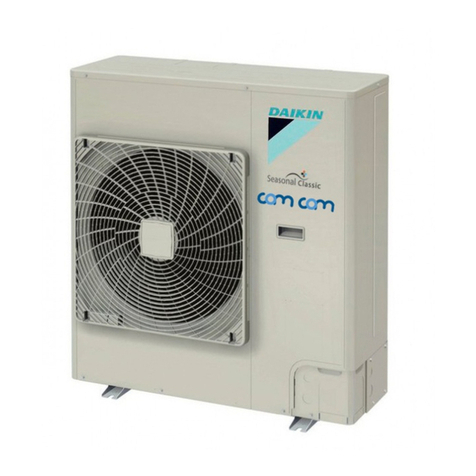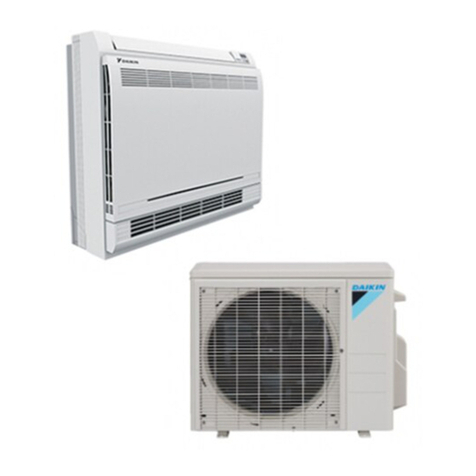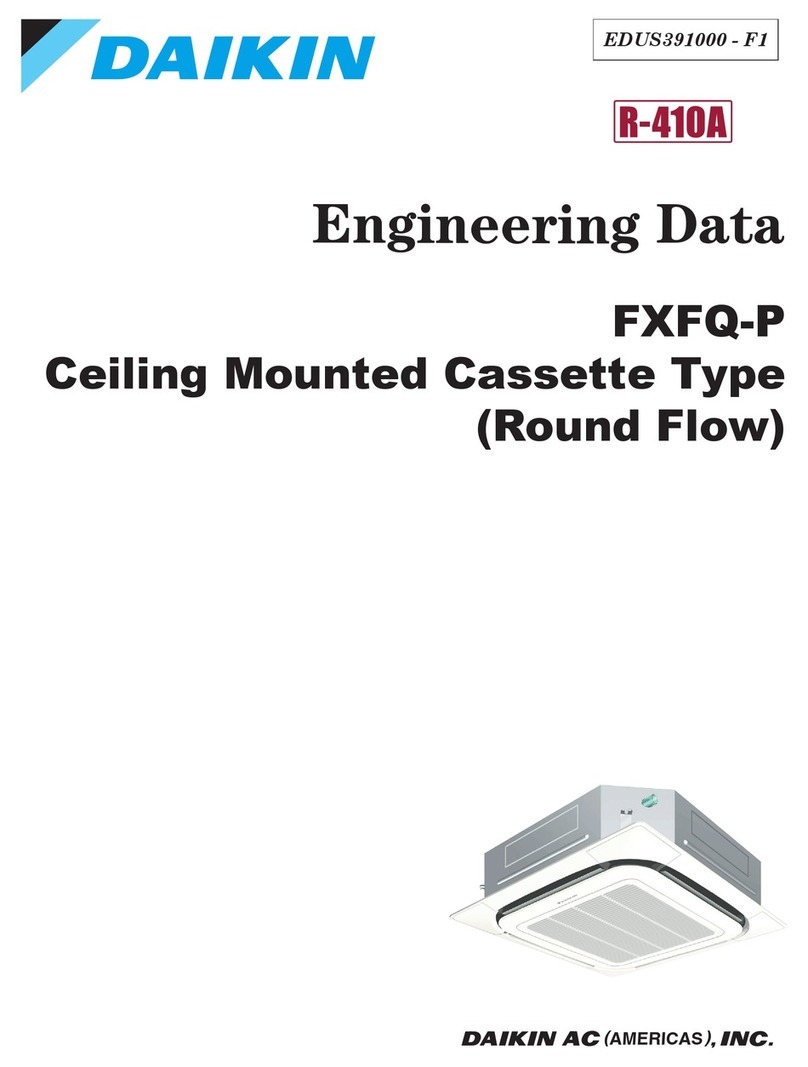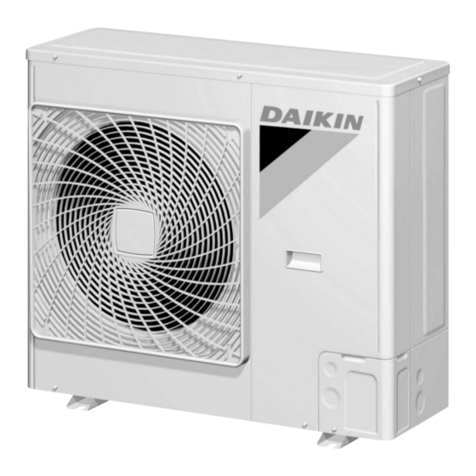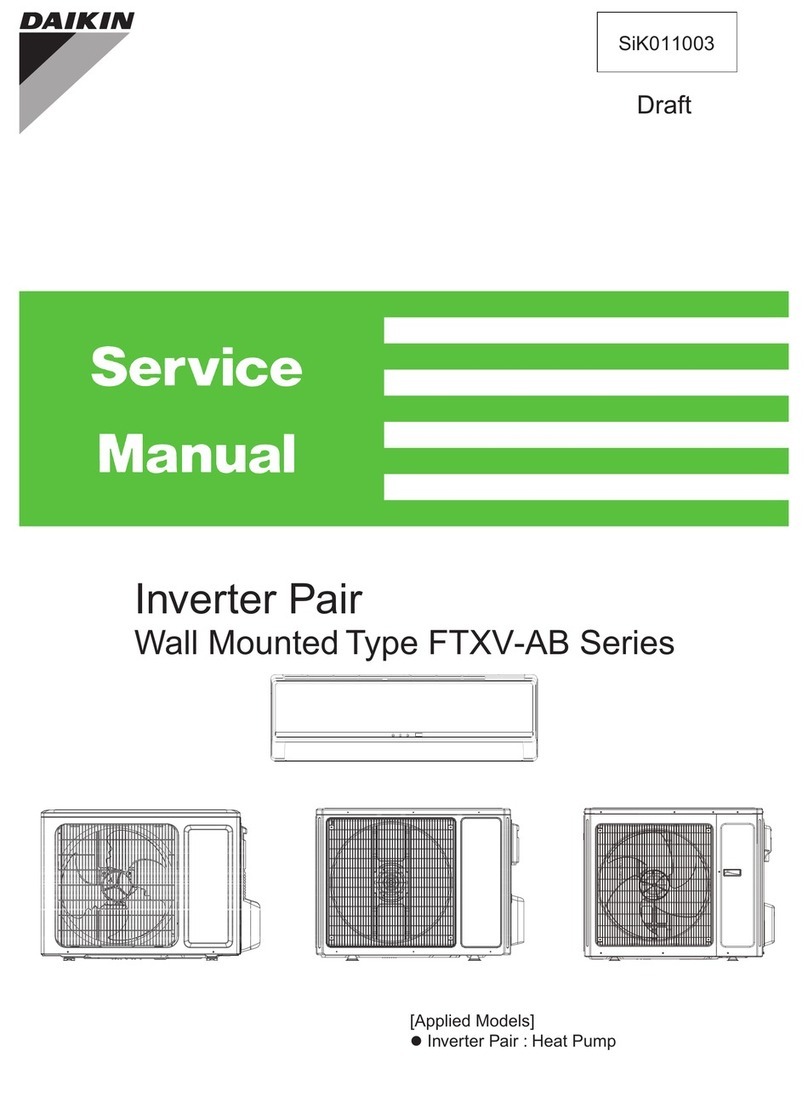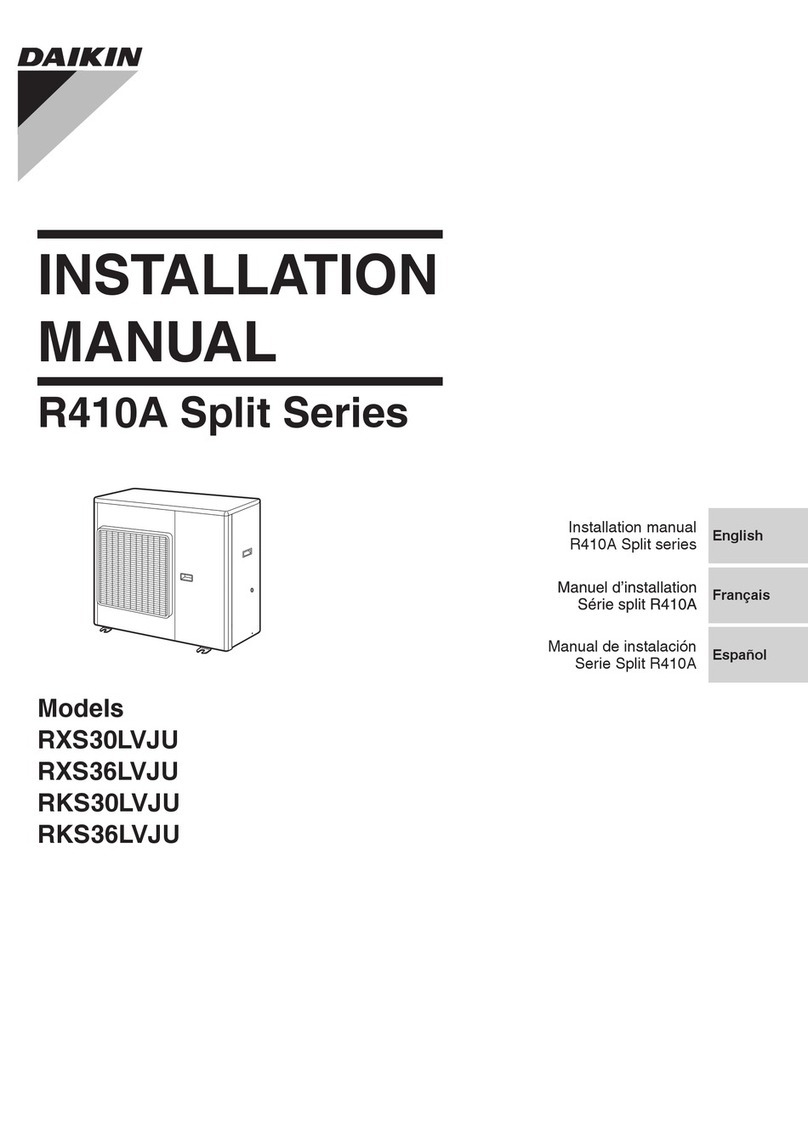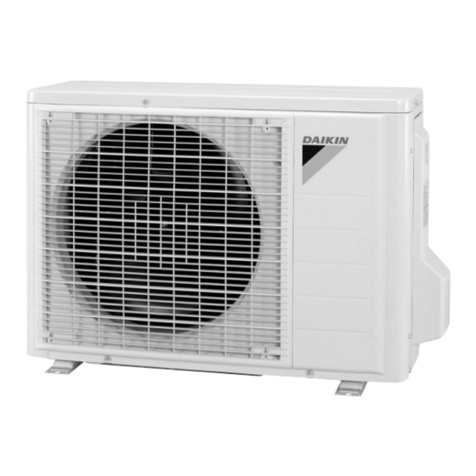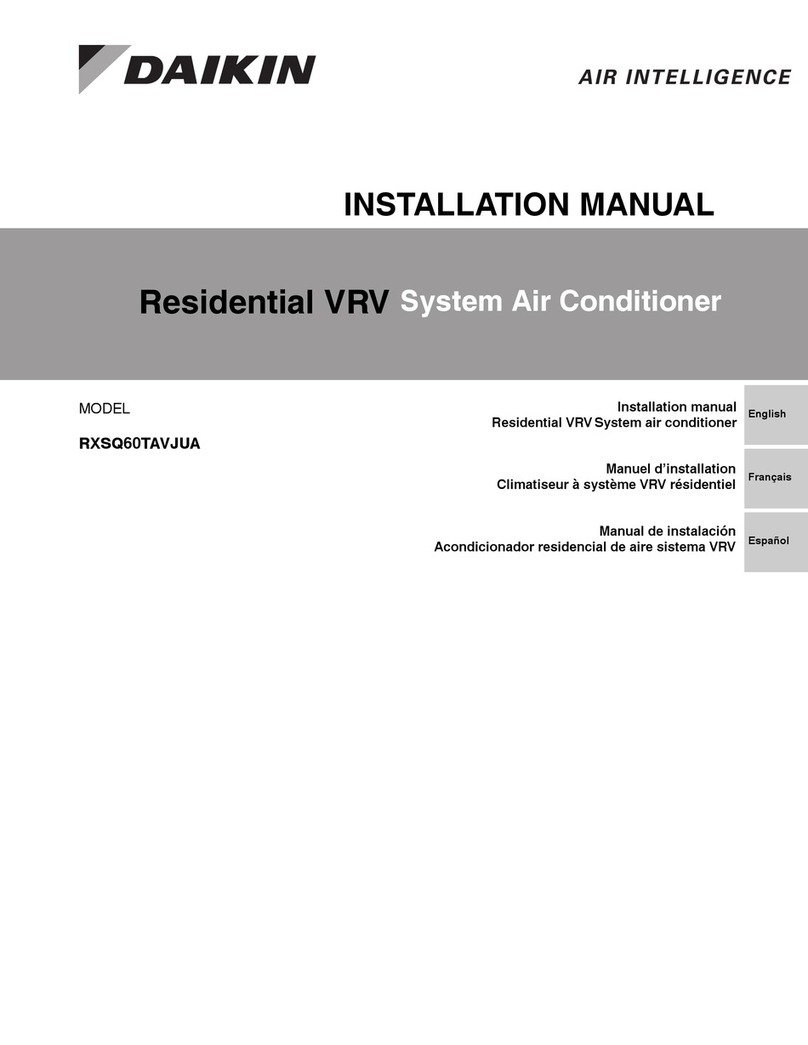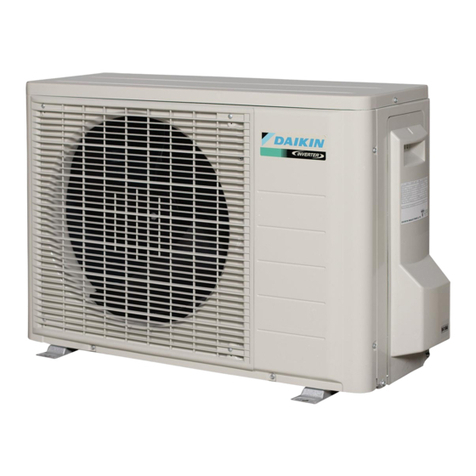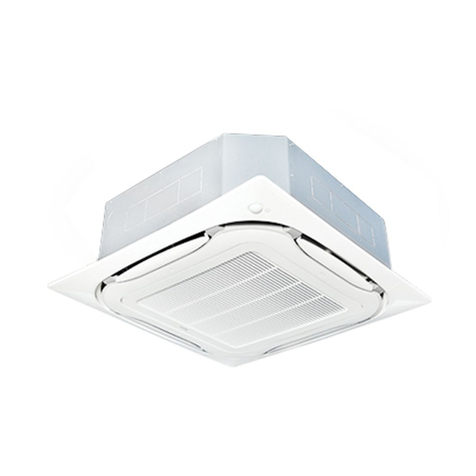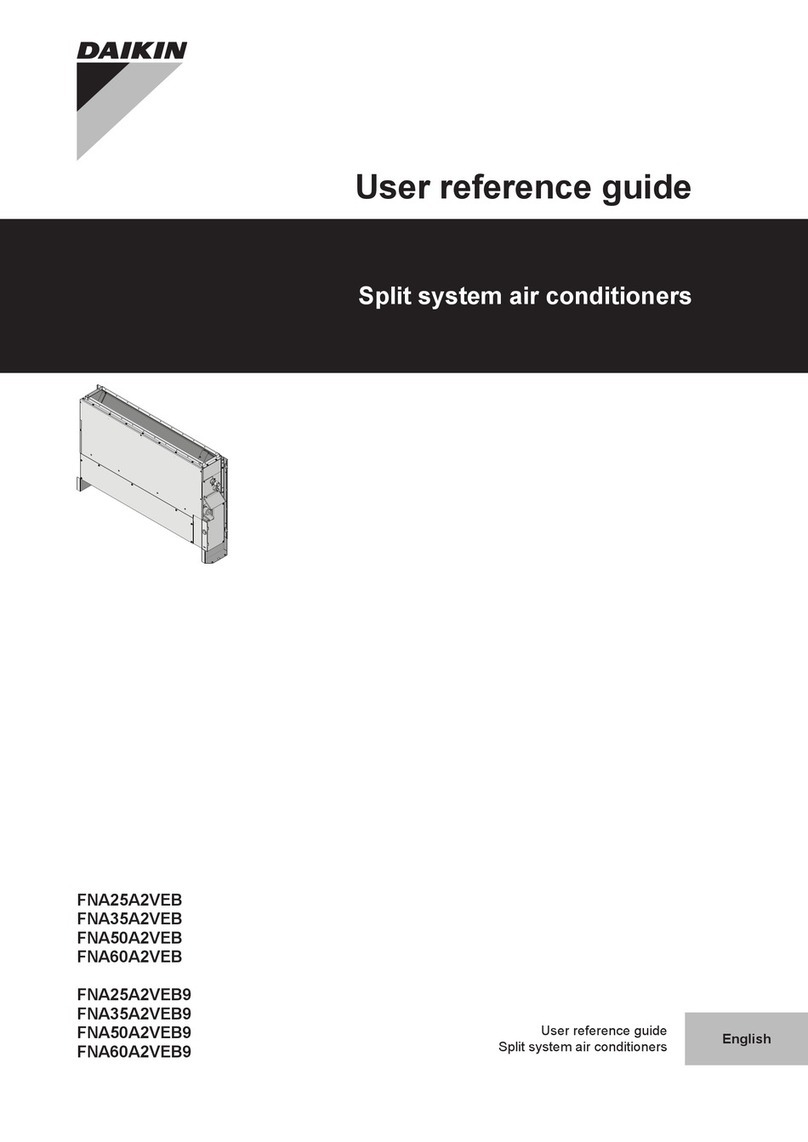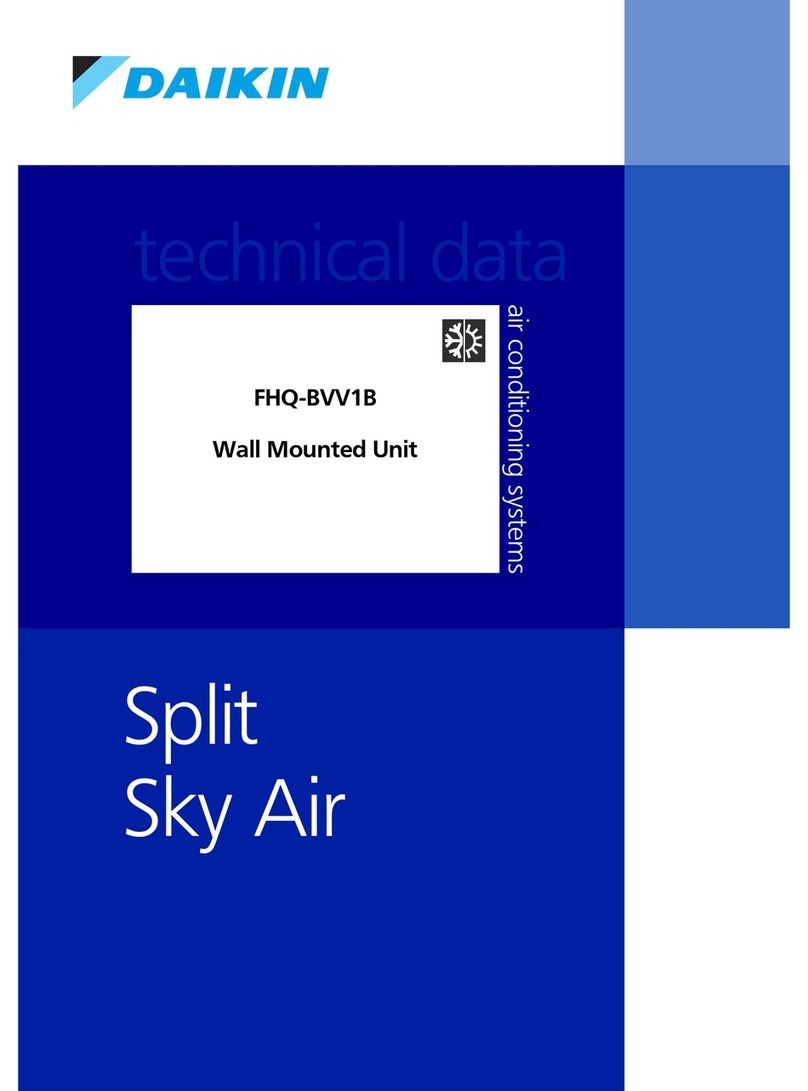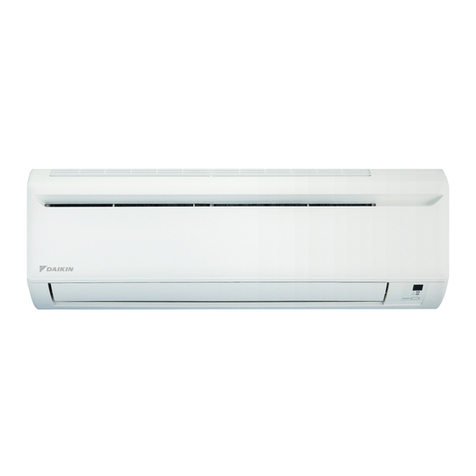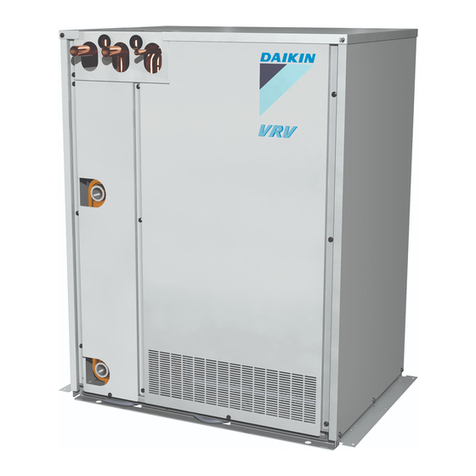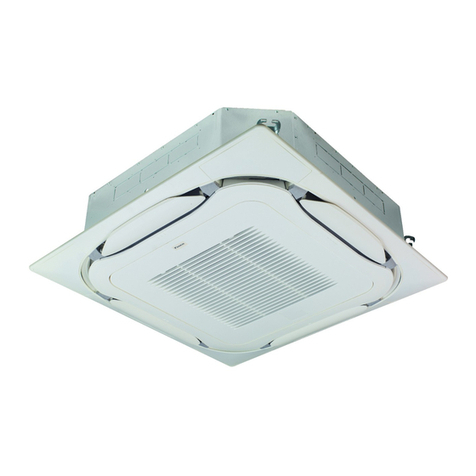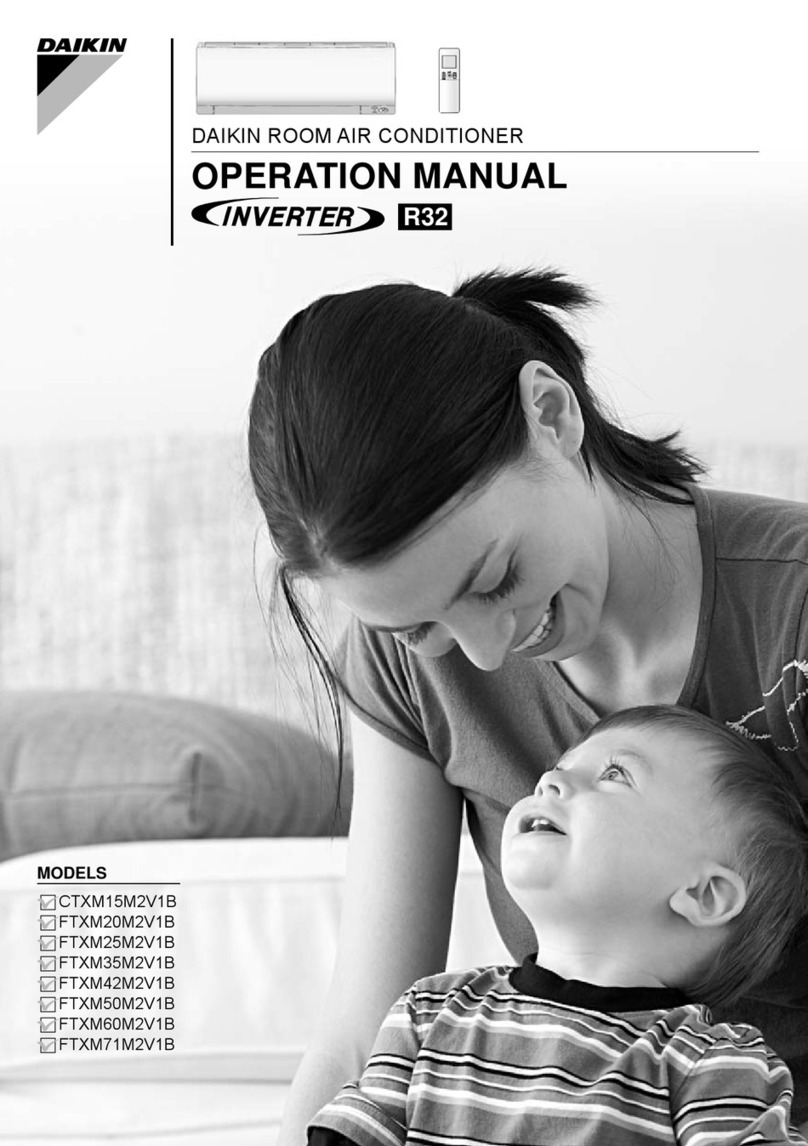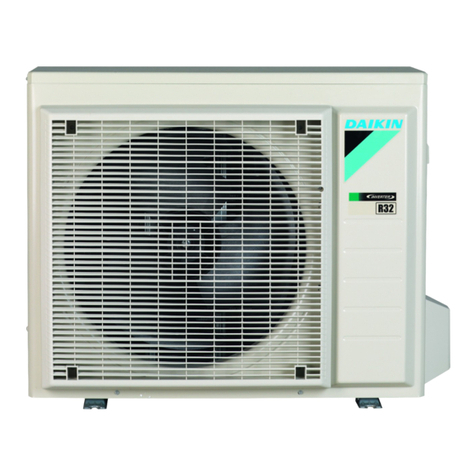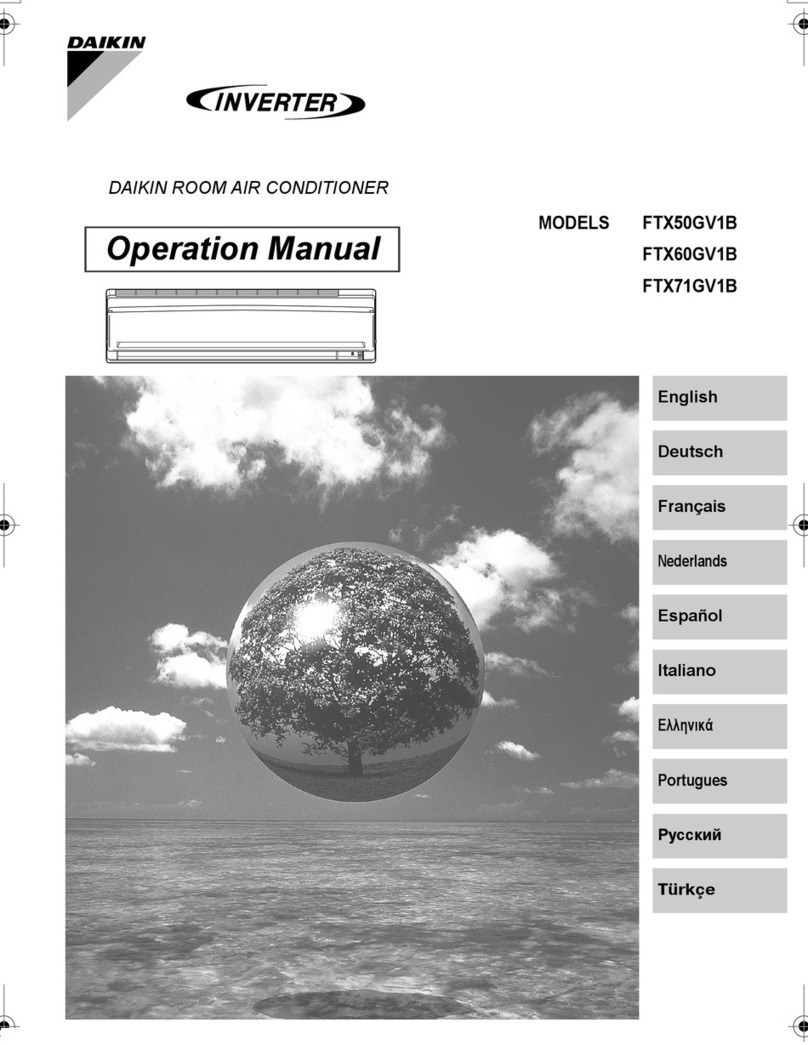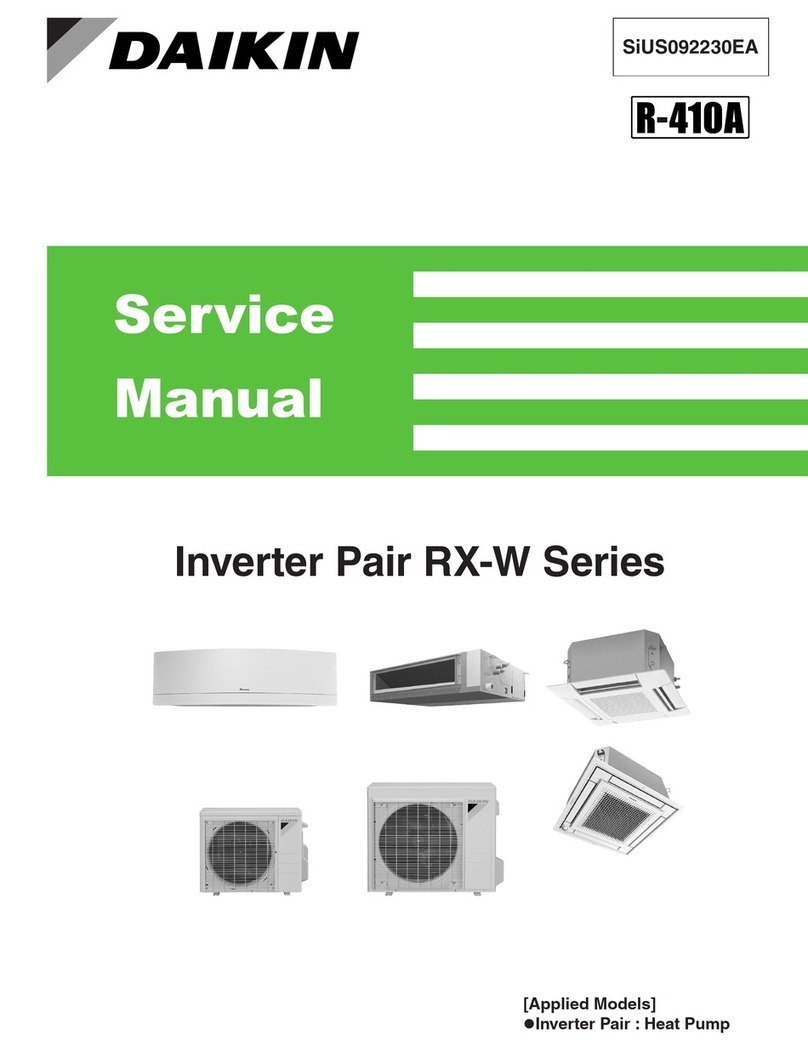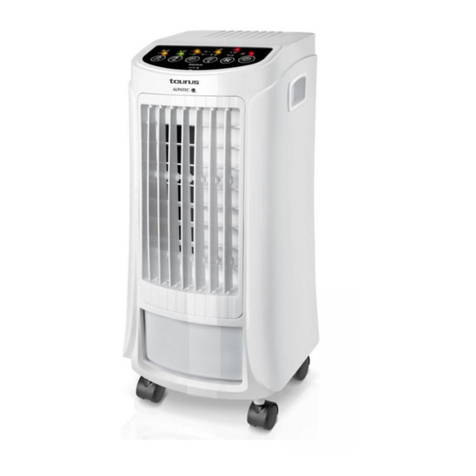
2■English
• When wiring, position the wires so that the electrical
wiring box cover can be securely fastened. Improper
positioning of the electrical wiring box cover may result in
electric shock, re, or the terminals overheating.
• Before touching electrical parts, turn off the unit.
•
The circuit must be protected with safety devices in
accordance with local and national codes, i.e. a circuit breaker.
•
Securely fasten the outdoor unit terminal cover (panel). If the
terminal cover/panel is not installed properly, dust or water
may enter the outdoor unit causing re or electric shock.
• When installing or relocating the system, keep the
refrigerant circuit free from substances other than the
specied refrigerant (R410A) such as air. Any presence of
air or other foreign substance in the refrigerant circuit can
cause an abnormal pressure rise or rupture, resulting in
equipment damage and even injury.
• Do not change the setting of the protection devices. If the
pressure switch, thermal switch, or other protection device
is shorted and operated forcibly, or parts other than those
specied by Daikin are used, re or explosion may occur.
• Do not use means to accelerate the defrosting process (if
possible) or to clean, other than those recommended by
the manufacturer.
• The appliance must be stored in a room without
continuously operating ignition sources (for example:
open ames, an operating gas appliance or an operating
electric heater).
• Do not pierce or burn.
• Be aware that refrigerants may not contain an odor.
• Comply with national gas regulations.
CAUTION
• Do not touch the switch with wet ngers. Touching a switch
with wet ngers can cause electric shock.
• Do not allow children to play on or around the unit to
prevent injury.
• Wear adequate personal protective equipment (protective
gloves, safety glasses,…) when installing, maintaining or
servicing the system.
• The heat exchanger ns are sharp enough to cut. To avoid
injury, wear gloves or cover the ns while working around
them.
• Do not touch the refrigerant pipes during and immediately
after operation as the refrigerant pipes may be hot or
cold, depending on the condition of the refrigerant owing
through the refrigerant piping, compressor, and other
refrigerant cycle parts. Your hands may suffer burns or
frostbite if you touch the refrigerant pipes. To avoid injury,
give the pipes time to return to normal temperature or, if
you must touch them, be sure to wear proper gloves.
•
Install drain piping to ensure proper drainage. Improper drain
piping may result in water leakage and property damage.
• Insulate piping to prevent condensation.
• Be careful when transporting the product.
• Do not turn off the power immediately after stopping
operation. Always wait for at least 5 minutes before turning
off the power. Otherwise, water leakage may occur.
• Do not use a charging cylinder. Using a charging cylinder
may cause the refrigerant to deteriorate.
• Refrigerant R410A in the system must be kept clean, dry,
and tight.
(a) Clean and Dry -- Foreign materials (including mineral
oils such as SUNISO oil or moisture) should be
prevented from getting into the system.
(b)
Tight -- R410A does not contain any chlorine, does not
destroy the ozone layer, and does not reduce the earth’s
protection again harmful ultraviolet radiation. R410A
can contribute to the greenhouse effect if it is released.
Therefore take proper measures to check for the tightness
of the refrigerant piping installation. Read the chapter
Refrigerant Piping Work and follow the procedures.
• Since R410A is a blend, the required additional refrigerant
must be charged in its liquid state. If the refrigerant is
charged in a state of gas, its composition can change and
the system will not work properly.
• The indoor unit is for R410A. See the catalog for outdoor
models that can be connected. Normal operation is not
possible when connected to non-compatible outdoor units.
•
Remote controller (wireless kit) transmitting distance can be
shorter than expected in rooms with electronic uorescent
lamps (inverter or rapid start types). Install the indoor unit
far away from uorescent lamps as much as possible.
• Indoor units are for indoor installation only. Outdoor units
can be installed either outdoors or indoors.
• Do not install the air conditioner or heat pump in the
following locations:
(a) Where a mineral oil mist or oil spray or vapor is
produced, for example, in a kitchen.
Plastic parts may deteriorate and fall off or result in
water leakage.
(b) Where corrosive gas, such as sulfurous acid gas, is
produced.
Corroding copper pipes or soldered parts may result in
refrigerant leakage.
(c) Near machinery emitting electromagnetic waves.
Electromagnetic waves may disturb the operation of
the control system and cause the unit to malfunction.
(d) Where ammable gas may leak, where there is carbon
ber, or ignitable dust suspension in the air, or where
volatile ammables such as thinner or gasoline are
handled. Operating the unit in such conditions can
cause a re.
• Take adequate measures to prevent the outdoor unit
from being used as a shelter by small animals. Small
animals making contact with electrical parts can cause
malfunctions, smoke, or re. Instruct the user to keep the
area around the unit clean.
• Servicing shall be performed only as recommended by the
manufacturer and licensed or certied in their jurisdiction.
NOTE
•
The indoor unit should be positioned where the unit and inter-
unit wires (outdoor to indoor) are at least 3.3ft (1m) away from
any televisions or radios. (The unit may cause interference with
the picture or sound.) Depending on the radio waves, a distance
of 3.3ft (1m) may not be sufcient to eliminate the noise.
• Dismantling the unit, treatment of the refrigerant, oil and
additional parts must be done in accordance with the
relevant local, state, and national regulations.
• Only use tools for R410A, such as a gauge manifold,
charge hose, gas leak detector, reverse ow check valve,
refrigerant charge base, vacuum gauge, or refrigerant
recovery equipment.
• If the conventional refrigerant and refrigerator oil are
mixed in R410A, the refrigerant may deteriorate.
• This air conditioner or heat pump is an appliance that
should not be accessible to the general public.
• As maximum allowable pressure is 604psi (4.17MPa), the
wall thickness of eld-installed pipes should be selected
in accordance with the relevant local, state, and national
regulations.
FTN005-U
English
01_EN_3P686875-1.indd 2 2022/04/28 11:02:33
